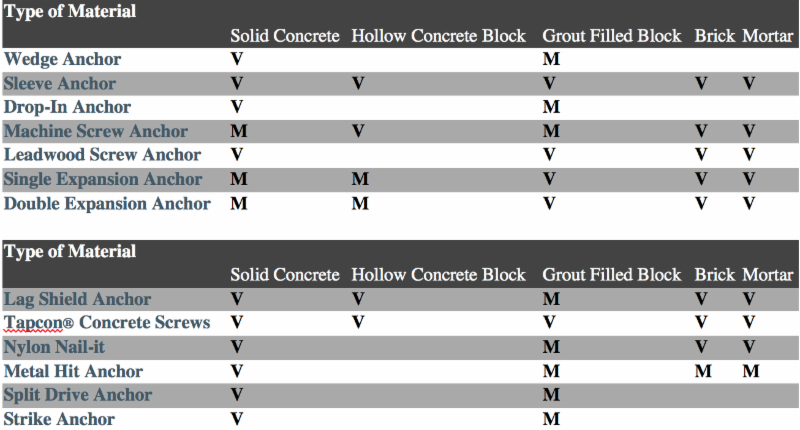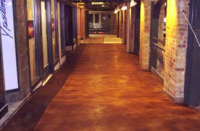 The process of purchasing the most effective concrete anchor and concrete fastener for a project can be streamlined by asking these basic questions:
The process of purchasing the most effective concrete anchor and concrete fastener for a project can be streamlined by asking these basic questions:
Question: What is the base material being fastened to?
Concrete- all concrete anchors will work in concrete.
Block -all anchors except the wedge anchor and drop-in anchor can be used in block.
Mortar -all anchors except the wedge anchor and drop-in anchor can be used in mortar.
Brick-all anchors except the wedge anchor and drop-in anchor can be used in brick.
Question: How heavy is the object to be fastened?
Smaller, lighter weight objects can be fastened using 3/16" and 1/4" diameter fasteners.
Medium weight items will require 3/8", 1/2" or 5/8" diameter fasteners.
Heavy objects call for the use of 5/8", 3/4" or 1" diameter fasteners.
Question: What types of fasteners work best for various environmental conditions?
Indoors: For indoor, dry applications, the standard zinc plated anchors usually offer sufficient rust resistance.
Outdoors, Wet: Zinc can be used in wet, outdoor environments, but will rust over time. 303/304, 410 stainless steel and hot-dipped galvanized masonry fasteners will offer greater rust resistance in wet, outdoor environments.
Submerged Water: The 303/304 stainless steel should be used in applications where the concrete fastener will be submerged in water, and will provide the highest rust resistance.
Submerged Chemicals: The 316 stainless steel anchors offer the best protection against corrosion when being used around chemicals, such as salt water or chlorine around a pool.
Question: What style anchor is required?
Male Type Anchors- A stud-type anchor that is inserted directly into a predrilled hole in the concrete. When dealing with male anchors, hole size is equal to anchor size (with the exception of the Tapcon® screw). No spotting of the hole is required, and oftentimes the hole can be drilled through the fixture and into the base material. No setting tools are required.
Female Type Anchors- A female anchor is designed for a bolt to be inserted into them. The female anchor is placed in the concrete hole, and the bolt or screw is then inserted through the fixture into the female anchor. Female type anchors require the spotting of the hole. A setting tool is often required.
Use the tables below to choose the best anchor for purchase. Information is based on appropriateness for the base material.
V= Very suitable M= May be suitable

When the choice for a concrete anchor and fastener purchase has been made, then selecting the best price for the highest quality is the final step.www.confast.com












